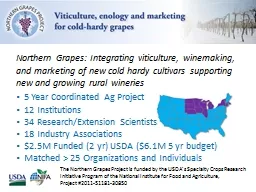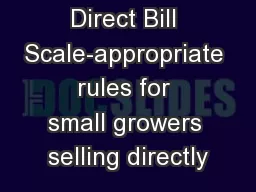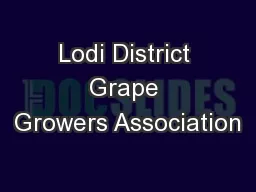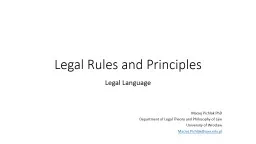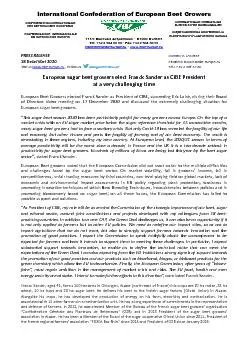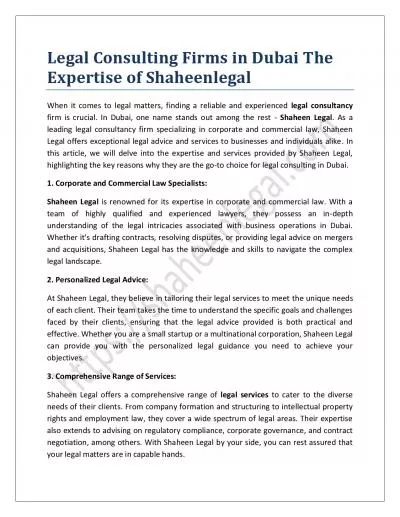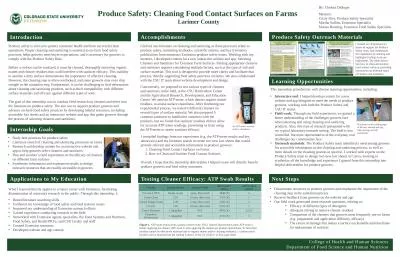PPT-Growers Legal Update
Author : briana-ranney | Published Date : 2020-01-29
Growers Legal Update Select Labor Legal Issues Andrew Branan JD Extension Assistant Professor Department of Agriculture and Resource Economics North Carolina State
Presentation Embed Code
Download Presentation
Download Presentation The PPT/PDF document "Growers Legal Update" is the property of its rightful owner. Permission is granted to download and print the materials on this website for personal, non-commercial use only, and to display it on your personal computer provided you do not modify the materials and that you retain all copyright notices contained in the materials. By downloading content from our website, you accept the terms of this agreement.
Growers Legal Update: Transcript
Growers Legal Update Select Labor Legal Issues Andrew Branan JD Extension Assistant Professor Department of Agriculture and Resource Economics North Carolina State University rabrana2ncsuedu This Lawyers Background. In the beginning…. Started at a strategic planning session for a grain marketing cooperative. Consensus was that Extension wasn’t reaching many growers. Typically only production-based. Taught by . Project . #2011-51181-30850. Northern Grapes: Integrating viticulture, winemaking, and marketing of new cold hardy cultivars supporting new and growing rural wineries . 5 Year Coordinated Ag Project. Brady Williams. University of Wisconsin—Madison . Agroecology. Program and . Center for Integrated Agricultural Systems. Tell the story of similar value-added but industries/businesses in the Midwest.. Pest of thin-skinned fruit . Found throughout the eastern states to North Dakota. Can attack sound fruit before they fully ripen. What makes this fruit fly different is the females ovipositor (egg layer), it has teeth to penetrate the skin of fruit. wxfy-pr. . – Pacific Northwest . Columbia Valley . 113ct . WSDA. $. 69.. 50. Pink Lady Apples, Cello . – Pacific Northwest . Various Growers . 12x3# Bags . Various Growers. $. 51.. 00. Hass Avocados . What the bill does. Clarifies which farm-direct activities require a license and which do not. Also clarifies status of farmers’ markets.. Allows low-risk processing such as drying fruits and vegetables without a processing license.. Lodi Winegrape Market Update. Jeff Bitter. Allied Grape Growers. July 14, 2017. How is Lodi Positioned . F. rom the Supply . S. ide and Within the California Market?. First: Current allocation of grapes based on bottle price. address . the underlying causes of their poverty, we . are . merely performing legal . triage. . . We advocate for systemic reforms such . as. rehabilitative . sentencing. In lieu . of . the homeless . Legal Rules and Principles Legal Language Maciej Pichlak PhD Department of Legal Theory and Philosophy of Law University of Wroclaw Maciej.Pichlak@uwr.edu.pl Structure of a norm Hypothesis DES BETTER AVIERS EUROPEEN S * CONFEDERA ZIONE INTERNAZIONALE DEI BIETICOLTORI EUROPEI INTERNATIONALE VEREINIGUNG EUROP Are you looking for Legal Consultant & Legal Advice Services in Dubai? Albraikiadvocates.com provide best Legal Consultancy Firm, Advocates & Legal Consultants in Dubai Find the Best Business Lawyer Consultation & Business Setup Services in Dubai? Contact Shaheenlegal.com we provides the Best Business Setup, Civil Legal Advice Service & Drafting Company Services in Dubai. When it comes to legal consulting firms in Dubai, Shaheen Legal stands out as a trusted and reliable choice. With their expertise in corporate and commercial law, personalized legal advice, comprehensive range of services, and outstanding reputation, they have established themselves as leaders in the field. Whether you are a business owner or an individual seeking legal guidance, Shaheen Legal is the go-to firm for all your legal needs in Dubai. Cristy Dice, Produce Safety Specialist. Martha . Sullins. , Extension Specialist. Marisa Bunning, Extension Food Safety Specialist . Introduction. Accomplishments . Learning Opportunities. Next Steps.
Download Document
Here is the link to download the presentation.
"Growers Legal Update"The content belongs to its owner. You may download and print it for personal use, without modification, and keep all copyright notices. By downloading, you agree to these terms.
Related Documents


